It's almost that time of year when fishing at the Hot Dog, Ham Bone, and other inshore lumps used to provide all the back breaking action offshore anglers could handle, when the bluefin tuna made an appearance along the Mid-Atlantic coast. For many years bluefin tuna swarmed the inshore lumps during the early summer months, although in recent times warming waters have hadthese fish heading north in a beeline. Last winter, however, was a very cold one by modern standards. Will bluefin reappear on the inshore lumps? Or, will we have to wait for December to target this species again? It's an open question, but if they do appear one thing is for sure: anglers will be very, very psyched to go after them.
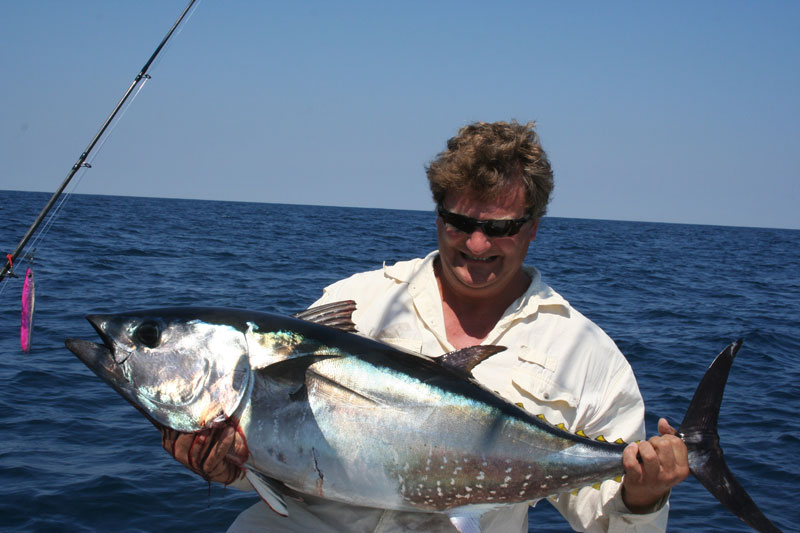
Bluefin are unique. Unlike other members of the tuna family, they are capable of regulating their body temperature. This gives them the ability to feed throughout the water column, especially near bottom on inshore shoals. Bluefin have extraordinary tolerances for temperature swings, and been found in water as cold as 42.8 while maintaining a body temperature of 77 to 80 degrees.
This ability to conserve metabolic heat allows them to be caught in water that anglers often do not place bait, including below the thermocline. Or, in more recent years, in the chilly December waters. Still, at many times of year the water down deep will be significantly cooler than surface temperatures. When the sonar doesn’t indicate baitfish in the water column but sand eels are showing up on bottom, chances are pretty good that this is where bluefin will be found. Anglers might want to keep in mind that one bluefin study found they make a very slow and steady descent from near the surface to an average depth of 82 feet after dawn. Just the opposite was observed at dusk, when the fish take approximately 40 minutes to rise back near the surface. This should help indicate where bait should be placed. In early morning or late evening, the top layer of water is active. However, when the sun is high, bait placement should be presented deeper.
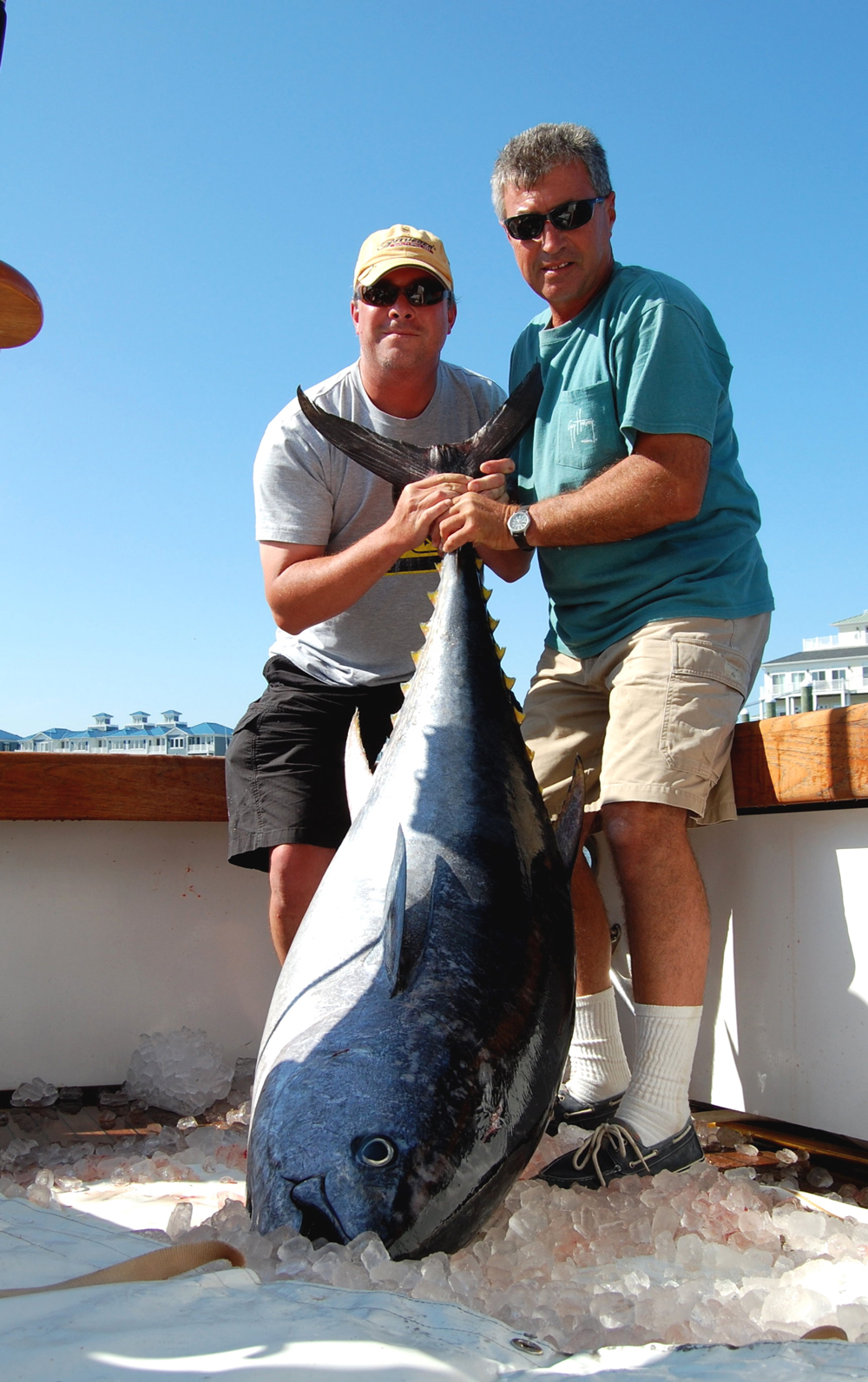
Trolling for Bluefin Tuna
Trolling spreads vary depending on the size of the bluefin being targeted. Smaller bluefin often prefer feeding at the transom on Cedar plugs, Zukers and rigged baits pulled in tight. Medium bluefin in the 80- to 200-pound range, on the other hand, are not as apt to be right behind the transom attacking flat lines. Short and long riggers produce these fish, and way-back lines are extremely productive. Way-back means trolling baits 200 or more yards aft of the transom.
Typically three way-back lines are pulled in a spread when medium class bluefin are targeted. Two lines are commonly run off the long riggers with baits set around 600 and 800 feet (line counters comes in handy when setting these lines). It’s hard to beat naked large/horse ballyhoo, or ballyhoo skirted with a crystal or blue/white Ilander. The third line is pulled off a planer with the bait set 300 to 400 feet behind transom. A large/horse ballyhoo skirted in purple/black is a good choice for this line. Also, don’t discount a silver 3.5-inch Drone spoon. It is imperative to check all of these baits often as they seem to pick up all the trash in the ocean.
For the planer line, use a Z-wing, Old Salty #32 or Sea Striker #8 planer, just as you might as a wahoo trolling tactic. This is attached to 50 to 75 feet of 150 pound test line, which is cleated or attached to the transom. With the planer deployed, next place the bait the desired distance behind boat. Then wrap a #64 rubber band around the fishing line several times. The two ends of the rubber band are then attached to one end of a double snap swivel. The other end of the double snap swivel is clipped onto the planer line. As fishing line is slowly let out, water pressure forces the snap swivel to slide down the line to the planer, locating the bait at the same depth. Thus deployed, you’re ready to place your rod in the holder and set the drag. When a bluefin strikes the rubber band breaks, allowing fish to be fought without any extra weight or drag.
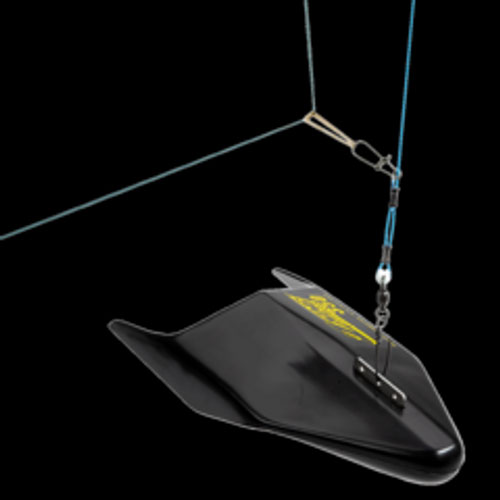
Another rigging option is to insert a roller release clip in the planer line five feet above the planer. Used in this manner, you’ll want to set the bait behind the boat before inserting the fishing line in the planer release clip, and then setting the planer. After hooking up a bluefin, always remove the planer from the water to eliminate the possibility of entanglement, and to allow boat to back down if necessary.
In a way-back spread, most pros will also pull spreader bars off the short riggers. The psycho-squid color’s popularity has been near the top of the list the last few years, followed by green and pink. Of course, spreader bars are not the only ticket, never discount those naked horse ballyhoo or squid daisy chains to get knock-downs on the short riggers.
Chunking for Bluefin
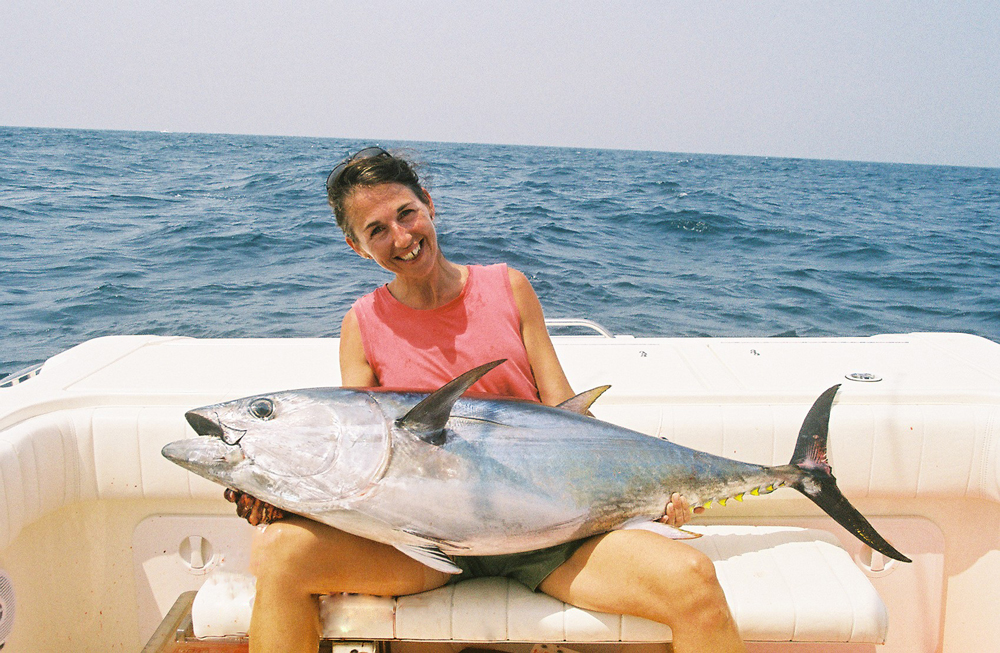
Bluefin tuna normally are not as picky as when chunking for yellowfin tuna, especially when they're feeding deep. A standard chunking leader is a six foot piece of 50-pound fluorocarbon tied to a small black barrel swivel. Since the leader is too light to be wired by hand, it must be short enough to allow gaffing of the fish. A common set-up consist of suspending baits at various depths that correspond with the chunk line. The chunks’ rate of descent will vary day to day depending on the current, so lines should range from floaters (with no weight) set right behind the boat, to lines set at a depth of 100 feet or more with up to 20 ounces of lead. One bait positioned directly under the boat, five cranks off bottom, has always been a winner for our charter clients.
Other baits are staggered, but, at least one additional bait should be suspended under a float and positioned just below the thermocline. You can suspend additional weighted baits under floats to maintain their depth. Slide an egg sinker 20 feet up the line above leader swivel, and hold it in place with a rubber band. Anywhere from one to six ounces of lead is normally sufficient.
Cut butterfish into five or six pieces and begin a chunk line by throwing a piece spaced about every six feet with an occasional handful thrown in for good measure. A mistake often made after hooking up is that the chum line is stopped or broken during the ensuing confusion and excitement. Someone’s job must be to continue to throw chunks to keep the school of fish behind the boat. If the anglers’ abilities allow for multiple hook-ups, and you're properly equipped to fight multiple fish, great! Otherwise, just try to fill the box one fish at a time. Either way, do not stop chunking or everyone on board will soon be watching the boat anchored next to you catch your school of fish.
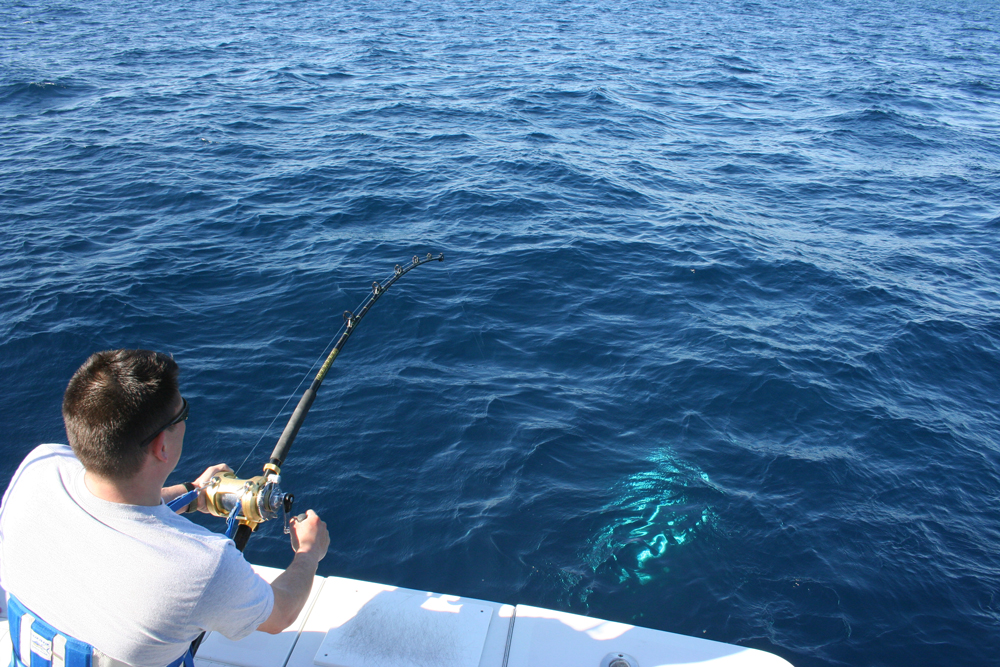
By John Unkart, author of Offshore Pursuit" and "Saltwater Tales,” available on Amazon.
BLUEFIN TUNA FISHING TIPS
- Take the fight to the fish—battles are seldom won on defense. The angler must attempt to control the fish whenever possible, and remember that medium size bluefin are able to recoup energy if they’re allowed to rest. You must maintain constant pressure.
- Keep in mind that the angler must also conserve his or her own energy for the battle. Utilize a harness to support the rod and relieve tension on the arms. Instead of lifting the rod with the arms, lean backwards into the harness to lift the rod for line retrieval.
- Keep the line out to a minimum. Less yardage out there means less stretch in the line, and more pressure on the fish. It will also reduce chances of the line rubbing on something in the water.
- Allow no slack. Ever. Many anglers lose fish because the line goes slack and they assume that the fish is gone. But tuna will often make a 180-degree turn and charge the boat. Never stop winding until the line comes taut or the end of the line comes out of the water, and use the boat to help take up slack line if necessary.
- When feeling fatigued, remember the basics: remain calm, and lift the rod then retrieve line with the reel. Pulling or jerking on the rod will only contribute to a lost fish. If exhaustion sets in there is no shame in tag teaming a 150-pound bluefin.
Editor's note: This article was originally published in July of 2017 and was last updated in March of 2025.